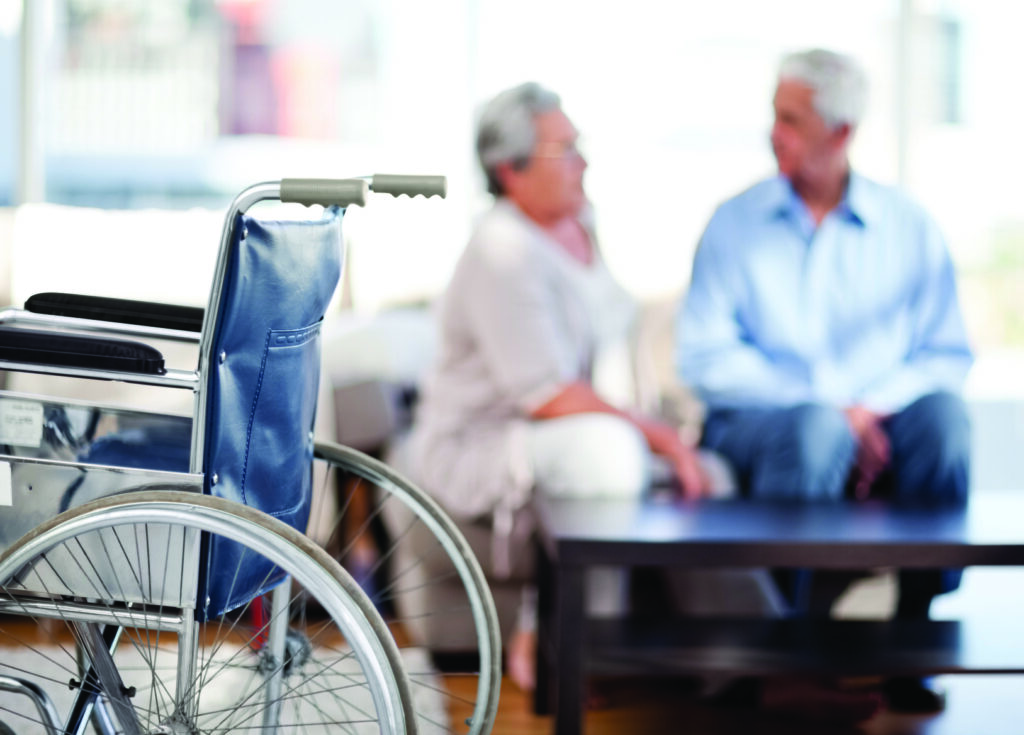Test your knowledge of mobility precautions to help keep your senior loved one active and safe
As we age, our ability to move changes as well, going from one extreme to the other. However, we realize how precious our mobility is when seeing an older relative dealing with difficulties in movement. Be part of the solution, and take our pop quiz to learn what steps you can take to help prevent falls for your senior loved one, and encourage activity as well as take the proper safety precautions when moving about.
1) What are some typical mobility issues that elderly people may experience?
- Joint issues
- Muscle weakness
- Pain
- Neurological (brain and nervous system) issues
- All of the Above
2) True or False: The number one mobility problem is getting out of chairs.
3) What does SPLAT mean to a doctor?
- Acronym to describe fall of person
- A code name for a person who has fallen
- A procedure for people who fall frequently
- There is no connection to SPLAT and falling
4) If a relative has fallen, what should you check for?
- If they have pain and/or discomfort
- If they can’t walk a straight line
- If they are dizzy or lightheaded
- If they become isolated or distant from others
5) What should a person do to help a person who has mobility problems?
- Remove all falling hazards from the relative’s house, even removing clothing that is baggy or too long because it could cause stumbling for the person.
- Discuss with the relative and the doctor about using walking aids such as canes or walkers.
- Encourage them to get active and join a program that assists with joint and flexibility strengthening.
- Have the relative’s sight and hearing checked regularly.
- All of the Above
6) True or False: The bathroom is the number one place where falls occur.
7) Why should you encourage an elderly relative to be active?
- It will get them focused on being active and improving their health.
- It allows them some independence and they are not entirely dependent on you.
- It could encourage them to socialize by being active with others.
- It lowers their insurance.
8) What types of shoes should be considered for your relative?
- Strong and sturdy
- Well-fitted
- Proper arch support
- Rubber soles
- All of the Above
9) True or False: Setting daily goals to improve mobility and overall health is something that you and your elderly relative can do together.
10) If a wheelchair is needed for the relative, what are the most important things to consider?
- Whether the footrests should be fixed or removable
- That it fits to the person’s size, so as not to cause bad posture
- That it can carry two or more people at a time
- That the chair will be able to safely help the person maneuver around their house and out in public
Resource: www.healthinaging.org, the official website for the American Geriatric Society’s Health in Aging Foundation.
ANSWERS
Answer 1: E) All of the Above. According to the American Geriatric Society’s Health in Aging Foundation, these are common signs that an older loved one might be having mobility issues.
Answer 2: False. The number one problem is falling, which can create a fear of falling for the person, as well as injuries resulting in bruises, broken bones, and/or neurological issues.
Answer 3: A). SPLAT stands for Symptom, Previous Falls, Location, Activity, and Time. These facts are what the doctor will need from you about the relative’s fall at their doctor’s visit.
Answer 4: A) and C). If a person has had a major fall, especially if they were knocked unconscious, and if they are experiencing a fever, difficulty breathing and/or cough, consult a doctor immediately. Your relative may have suffered a stroke, serious injuries from the fall or possibly has an infection or severe illness of some sort.
Answer 5: E) All of the Above. Taking these steps in a plan of action for your relative could help prevent them from future falls while influencing their adoption of a healthier lifestyle.
Answer 6: True. The bathroom is considered a notorious spot where falls happen. To alleviate this hazard, a person can place rubber mats and/or appliques underneath or on the bottom of the tub, along with adding side rails to the shower, tub, and toilet. Using a raised toilet seat is also recommended.
Answer 7: All but D). Encouraging your relative to join programs for seniors that help with strengthening the body, while also strengthening them socially, will build your relative up in more ways than just the physical.
Answer 8: E) All of the Above. These types of shoes are one of the most important aspects to increased mobility for your relative on a daily basis.
Answer 9: True. Doctors encourage relatives and the patient’s caregiver to set personal mobility goals to achieve so as to give the patient optimism and hope towards their mobility issues.
Answer 10: B) and D). A wheelchair is an extension of a person’s means of mobility and should be looked over for its safety precautions and comfort level for the person who will be using it regularly.
CREDITS
story by BLAIR TOWNLEY
